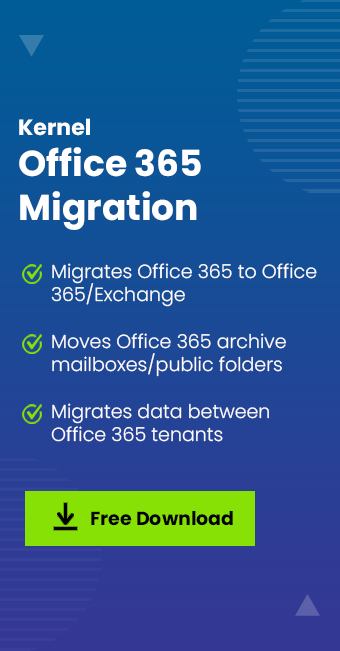Read time 5 minutes
Cloud computing has become a popular trend in the IT industry, as it helps businesses run applications and store data without deploying and maintaining on-premises IT infrastructure. What’s more interesting is that companies can migrate their existing applications and data to cloud platforms. However, cloud migration is not an easy process to execute. It requires proper planning and analysis, trained staff members, and much more. Many factors are necessary to consider while commencing into the cloud platforms. So, let’s delve into the strategies and phases of cloud migration in detail.
Significant stages for cloud migration
While migrating to the cloud, it is crucial for businesses to determine and understand the essential phases of cloud migration. Now, let’s discuss the critical stages of cloud migration.
1. Planning and preparation
First, it is important to have a proper plan in mind. It involves developing a business case that addresses why you need to migrate to the cloud. Consider the present scenario and possible advantages that you will get after migrating to the cloud. Also, it is required to assess the computing resources before migration. The right approach for planning cloud migration is to assign specific roles to your team members so that things can be executed quickly. However, if you have a large project, then you need to have a specialist in charge.
2. Choosing your cloud environment
There are three types of cloud platforms – private, public, and hybrid, you can choose the one that fits your requirements. Also, you will have to choose between a single cloud environment and the multi-cloud environment. In a single cloud environment, a single cloud provider provides all the services and applications that an organization needs. In a multi-cloud environment, you can use various cloud services from different providers. The benefit of using a multi-cloud environment is that you can use different clouds for various tasks to get the best results while reducing vendor lock-in. Also, with a multi-cloud environment, you can minimize the dependence on any one provider by lowering costs and increasing flexibility.
3. Creating baselines
The process of analyzing the pre-migration performance of your application to ascertain the post-migration performance is known as baselining. It gives you the report of migration and validates post-migration performance. So, you need to establish a baseline metric for every key performance indicator that you want to measure. To do so, verify how much data you need to collect to determine the baseline and choose a short baseline period to move faster. Well, whatever data-collection model is right for your industry, be sure about the type of data that you’re going to collect and for what period of time.
4. Prioritize the components
You need to finalize whether you want to migrate the entire application to the cloud at once or do it in intervals. For instance, you can choose to move the whole application data at once or do it component by component. If you want to perform component by component, then you need to identify the connections between your services and which services depend on what other services. In case you want to start with service-by-service migration that has fewer dependencies, then choose to migrate the most internal services, and then follow up with your other services.
5. Choose a migration solution
Generally, most organizations prefer to use native approaches for cloud migration. For example, if you are willing to migrate migrate IMAP to Office 365 or Exchange, then you can use Exchange PowerShell cmdlets that allow you to migrate IMAP emails to Office 365. However, there are various limitations with native approaches, such as the fact that you cannot migrate entire data at once, the fact that it doesn’t support migration from every email server, etc. Thus, it is recommended to have third-party software in hand to make the migration process more straightforward. For instance, if you want to migrate to Office 365/Exchange, then you prefer using the Kernel Office 365 Migration tool.
6. Migrate application and review the data
If you plan the migration carefully, everything will go smoothly and quickly. Also, depending on the size of your databases and applications, you can use various techniques to copy the databases. If you don’t have much data for migration, then you can copy the data with an internet connection only. However, for a large amount of data, it is recommended to avoid unnecessary data before sending it to the cloud. And if you want to reduce the costs of migration, then prefer shipping the physical drives of data to your cloud provider.
Make sure you take proper security measurements while performing the migration. Even the temporary data storage should be as secure as the destination. If you are hiring a cloud provider, then you will get access to various migration tools and use them to ease your migration process.
7. Have a backup plan
Even after migrating to the cloud, there are a few things that you need to consider. First of all, make sure you have a backup plan and solution in hand. Moving to the cloud is secure, but a disaster can happen anytime. So, it’s always great to have a backup of your data. To back up your data, you can ask your cloud provider to provide some backup solutions, or you can use third-party software as well. For example, if you want to backup Office 365, mailboxes, then you can opt for Kernel Office 365 Backup & Restore tool.
Conclusion
In this blog post, we’ve seen and analyzed the several stages of cloud migration. However, it is also clear that cloud migration is a complex task. So, opting for the best cloud migration tool is the best choice. The Kernel Office 365 Migration tool stands out from the crowd in the cloud migration process. It completely migrates Office 365 tenants to the same tenant and a different tenant, with all data, including Exchange SharePoint, One Drive, and Teams. It supports Office 365 GCC High, GCC, DOD, and Microsoft 365 business plans and subscriptions. To experience more features of it, take a trial today.








